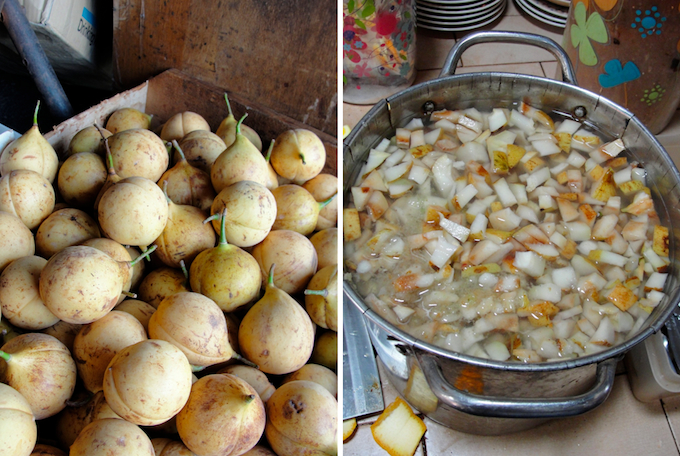Sun-drying mace (red arils), young nutmegs (white), mature nutmegs (brown)
Cinnamon, Clove, Ginger, Nutmeg – all closely associated with Christmas. Each spice adding a layer of warmth to any dessert on those frigid, winter days.
But where do they come from? Before the whole spices are ground up into a powder, bottled and sold on the grocery store shelf, they come from places nowhere near the North Pole. These four spices originated in South and Southeast Asia, and have since spread to other tropical regions in Africa and the Caribbean.
That Christmas eggnog you are drinking may even have a dash of ground nutmeg from a fruit that was grown on a tropical island off the west coast of Malaysia - in Penang.
Female nutmeg trees (male trees do not bear fruit) have two harvesting seasons - starting in March and September
Developed in the late 18th century by the British East India Company as a potential site for major spice plantations, Penang received thousands of nutmeg and clove seedlings from the Moluccas (“The Spice Islands”), the only place on earth where nutmeg and clove trees were found.
Penang’s spice plantations flourished, but so did the British Empire, and with it, the propagation of spice plantations throughout their colonies. Penang’s role in breaking the monopoly of the Spice Route quickly diminished, and to this day, the legacy can only be found in a few small farms on the east side of the island, which produce some of the highest quality nutmeg in the world.
Right: Young white nutmeg harvested early for nutmeg oil, and mature brown nutmeg and red mace for culinary uses
Even as a small, family run operation, Ghee Hup Nutmeg Factory is the biggest nutmeg producer in Penang (and probably in Malaysia). The farm began in 1953, when owner, Chang Kun Mim, left school to help his father with his new venture. What started out as just a farm, eventually grew into a factory as well, when during one bountiful harvest, Chang found himself with too many nutmegs and not enough buyers. Instead of selling them off for pennies, he decided to create his own nutmeg products.
In addition to selling whole nutmegs and mace, and even nutmeg trees, the Ghee Hup Nutmeg Factory now creates all sorts of nutmeg products – nutmeg jam, nutmeg balm, nutmeg oil, nutmeg juice, nutmeg syrup, candied nutmeg fruit, pickled nutmeg fruit. And recently, organic nutmeg tea – made from dried, ground nutmeg fruit. He also uses nutmeg leaves and stems to make a quick tea for visitors.
Nutmeg fruit being prepared for juice
Already in his late 60s, you wouldn’t know it based on the energy that Chang exudes while discussing everything and anything about nutmeg and mace. He leaves little doubt about how a nutmeg – in its many forms – can treat arthritis, indigestion, high blood pressure, headaches, and more.
Chang's wife separating the aril (mace) from the young nutmeg shells
Mature nutmegs: they will sit in the sun for one week until the seed inside dries enough to rattle
With his children off to careers in the city, and modern development reaching closer to his property, Chang may be the end of the line for the Ghee Hup Nutmeg Factory. The closing of this treasure would be another lost link to Penang’s early history along the Spice Route.
But if nutmeg is as magical as Chang describes, that connection to the past will live on for many more years. Maybe even long enough to convince one of his kids to change their mind.
A bud sprouting on a decades old nutmeg tree








